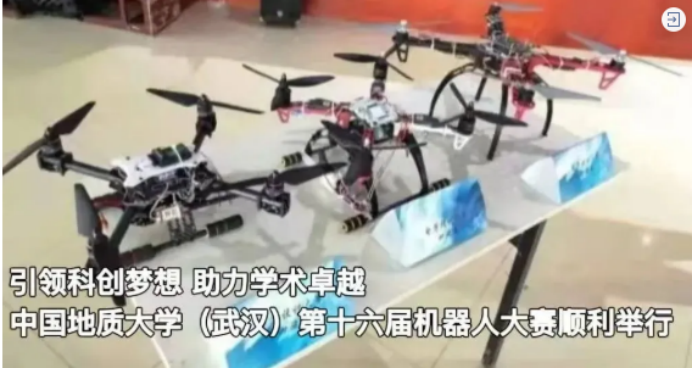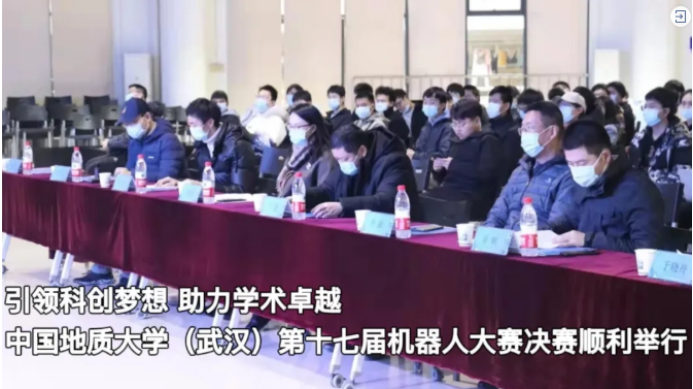Source: cugjdxy
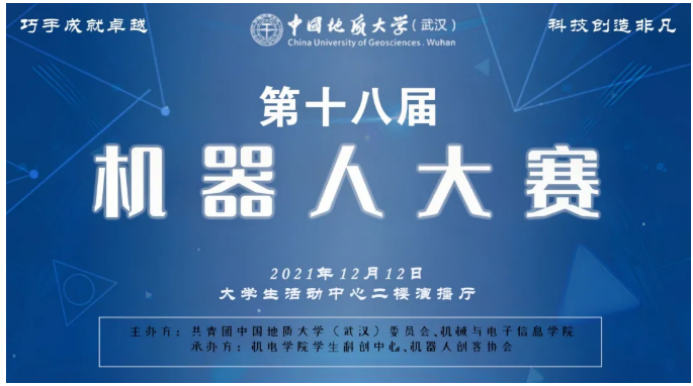
“Skillful Hands for Excellence, Science and Technology Create the Extraordinary”
The 18th Robotics Competition of China University of Geosciences (Wuhan)
Officially killed off
At 14:30pm on December 12 in the auditorium on the second floor of the Student Activity Center
Ding Huafeng, Dean of School of Mechanical Engineering and Electronic Information, Zhang Jianhe, Deputy Dean of Undergraduate School, Guo Xiaoyu, Deputy Secretary of the Youth League Committee of CUG, Yu Xiaozhou, Deputy Secretary of the Party Committee of School of Mechanical Engineering and Electronic Information, Du Yu, Secretary of Youth League Committee, Cheng Zhuo, Associate Professor of Department of Electronic Information Engineering, Zhang Weimin, Associate Professor of Department of Mechanical Engineering and other judges of the competition, as well as 77 participating teams attended the opening ceremony. The opening ceremony of the final competition was hosted by Yu Xiaozhou.
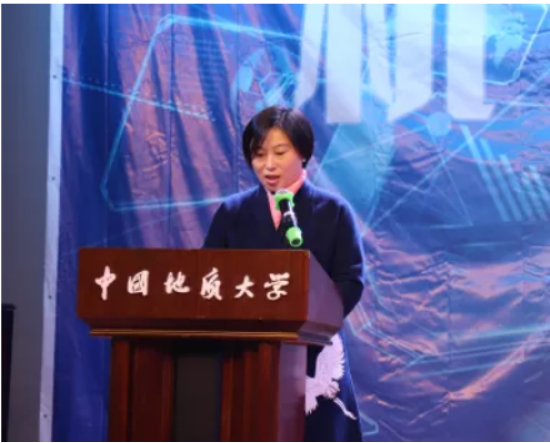
▲Yu Xiaozhou
The competition officially started with the singing of the national anthem.
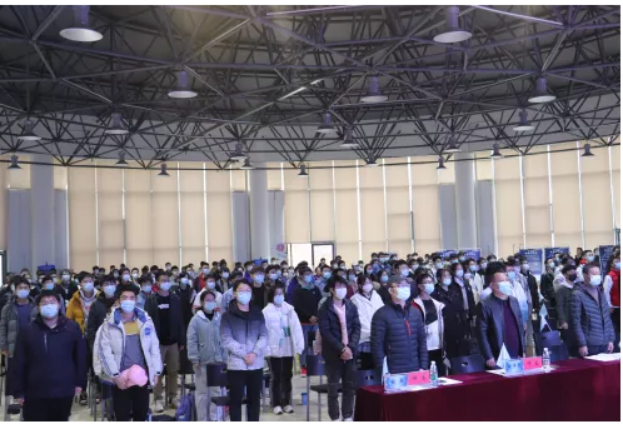
▲ Singing the national anthem together
Ding Huafeng delivered a speech on behalf of the organizers. He said that the School of Mechanical Engineering and Electronic Information has a fine tradition of science and technology innovation, and the Robotics Competition, as a university-level special technology project undertaken by the School of Mechanical Engineering and Electronic Information, has enhanced students' awareness of science and technology innovation, cultivated and delivered many outstanding talents for higher-level science and technology competition, and become an important platform for students to take the road of science and technology innovation. He called on the students to respond to the call for a strong science and technology nation on the new journey of the 100-year goal, and to sharpen their innovation practice without fear of hardship and danger.
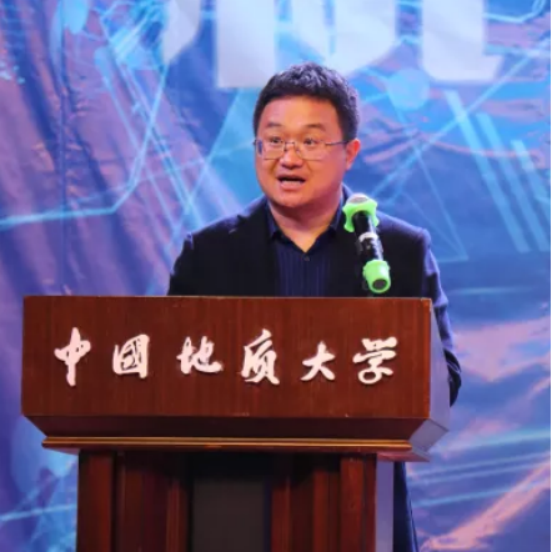
▲Speech by Ding Huafeng
Du Yu introduced the Robotics Competition. He pointed out that in the context of the normalized epidemic prevention and control requirements, the competition further optimized the setting of competition items and competition rules, and continued to strengthen the guidance of the competition by professional teachers and scientific and technological innovation societies. The competition was held in batches by combining online and offline. He encouraged the students to surpass themselves and climb the peak on the road of science and technology innovation.

▲Duyu introduced the competition
Xiong Ziyao, representative of the participating students, and Mo Mingxin, representative of the competition judges, made speeches and took oaths respectively.
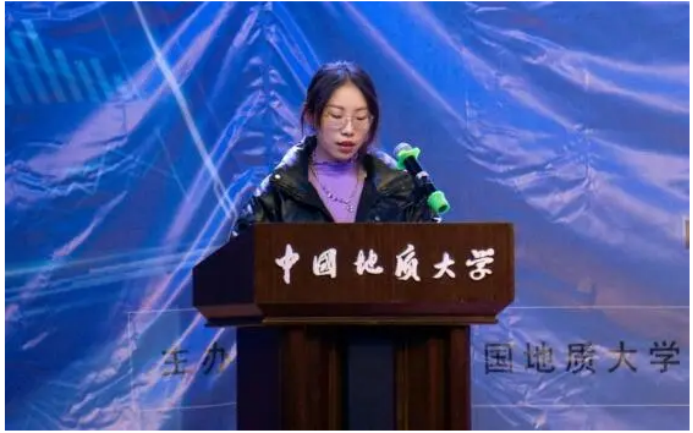
▲Xiong Ziyao spoke on behalf of the participating students
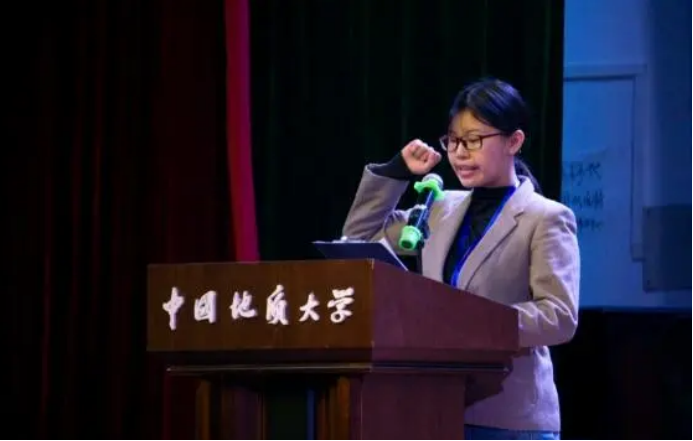
▲Mo Mingxin took the oath

▲The contestants are ready to go
The competition officially started. There were six competition items, including bipedal walking group, two-wheeled racing group, six-legged walking group, quad-rotor group, intelligent handling group, and innovative design group. The items involved many knowledge fields such as bionics, sensor technology, machine vision, mechanical structure design, embedded programming, hardware circuit design, etc., and the competition aimed to guide the students to apply their professional theoretical knowledge to practice to promote learning through competition.
[Bipedal Walking]
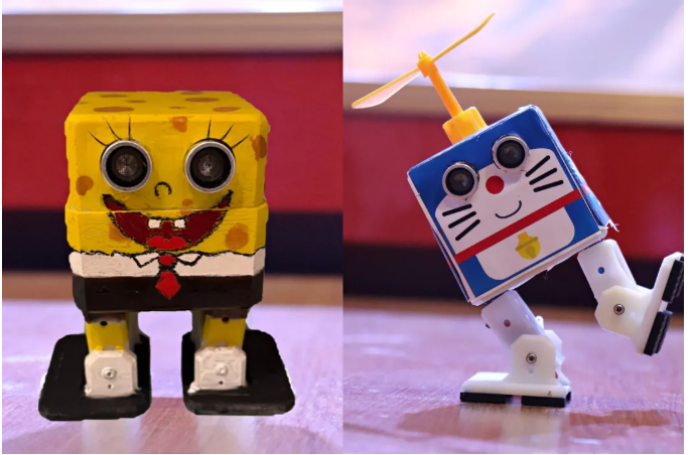
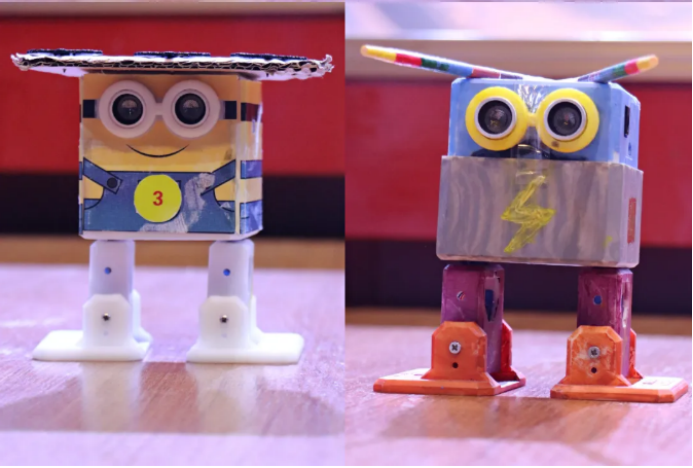
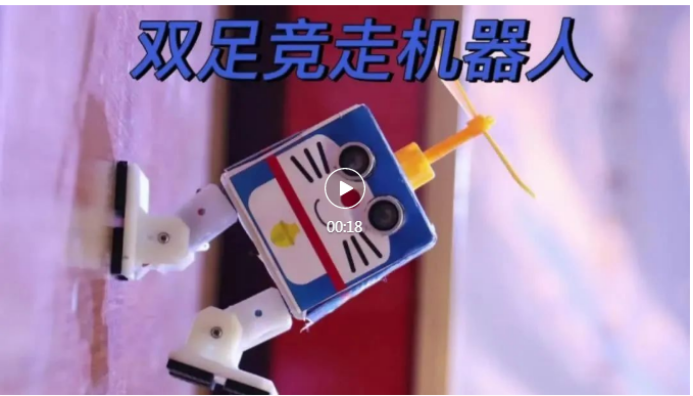

The bipedal walking event requires the contestants to design a small bipedal walking robot to imitate the track and field events of sports and complete the competition tasks required by the rules in the walking competition venue. The results of the competition depend on the speed of the robot. The robot is powered by battery, and the steering gear is used to control the gait of the robot. The contestants are required to optimize the hardware and software to enable the robot to walk in a balanced manner and stand up on its own after a fall. They also need to use sensors to determine the distance of the robot from the boundary to avoid the robot running off the track.
[Quad-rotor]

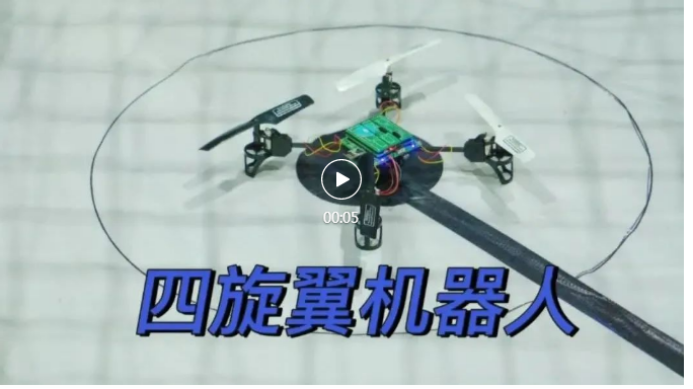
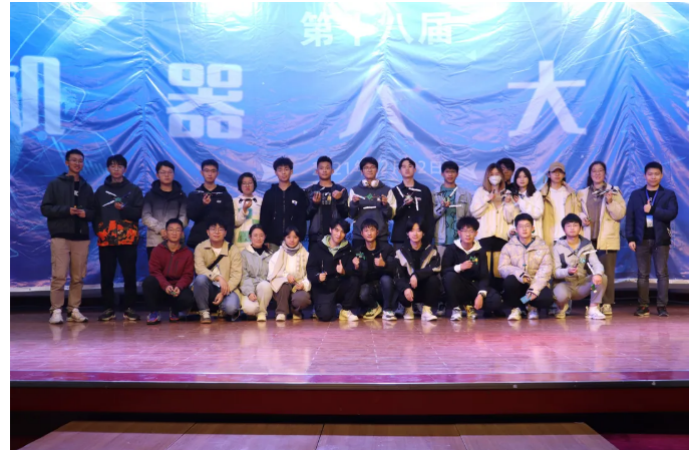
The quad-rotor item requires participants to design a quad-rotor robot that needs to accomplish tasks such as flying with objects, accurate spot landing, and flying to avoid obstacles. The score is determined according to the accuracy of the position the robot lands in and the flight time. The STM32 is selected as the core controller for the quad-rotor, and the attitude of its flight is controlled by the six-axis attitude sensor data, and the speed of each motor is adjusted by PID algorithm to achieve stable operation. Soaring up, hovering in the air; lifting and landing, swooping and retrograde.
[Six-legged Race Walking]
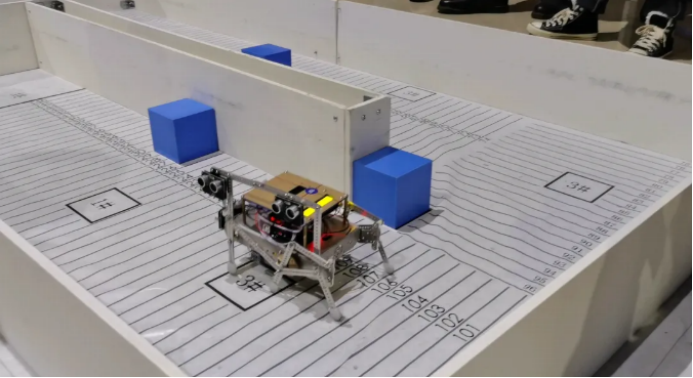

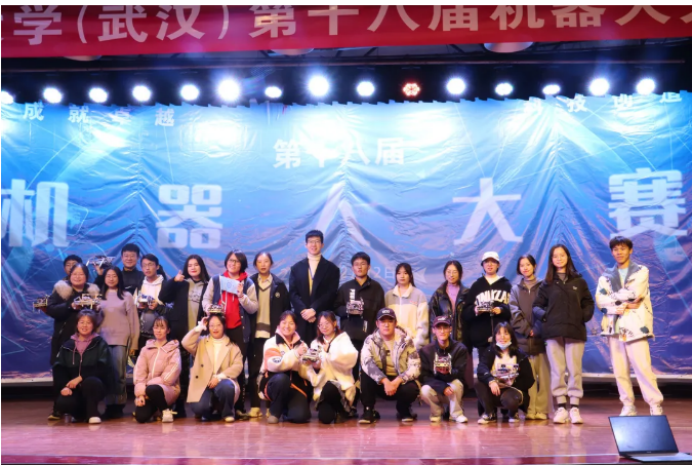
The six-legged race item requires simulating a six-legged creature to achieve indoor cruising. The six-legged robot starts from the starting point and moves around a circular race course with walls and partitions, avoiding obstacles and eventually reaching the finish area. The competition mainly tests the ability of the participants to use motors to control the robot's balanced walking ability; the use of infrared sensors and ultrasonic sensors to achieve the robot's automatic obstacle avoidance function. Finally, students are required to improve the robot's movement speed as much as possible on the basis of automatic obstacle avoidance.
[Intelligent Handling]
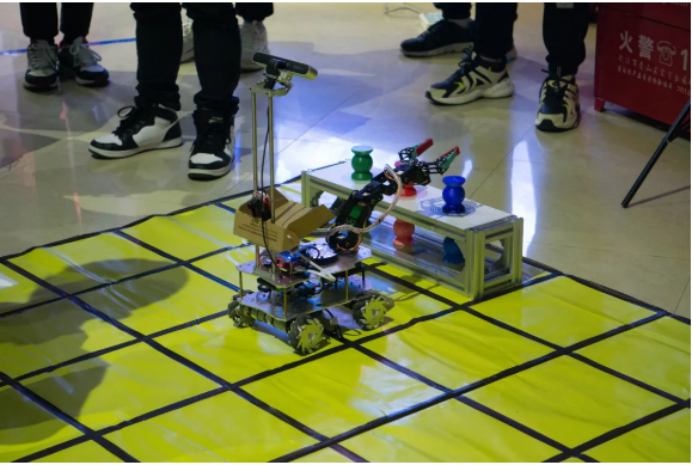
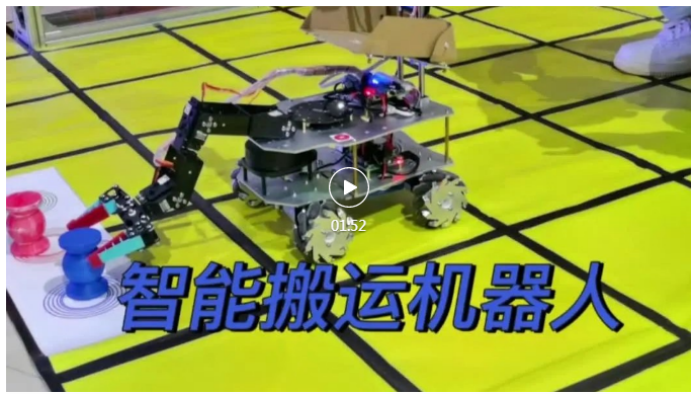

The intelligent handling item requires the participants to design an intelligent handling robot, which walks and transports materials in a designated industrial scene, identifies the handling task by scanning the QR code, carries the corresponding color materials from the shelf to the designated finished product area and places them accurately according to the task requirements. The competition examines not only the robot's stable motion function, but also the robot's ability to obtain task information and identify targets independently.
[Two-wheeled racing]
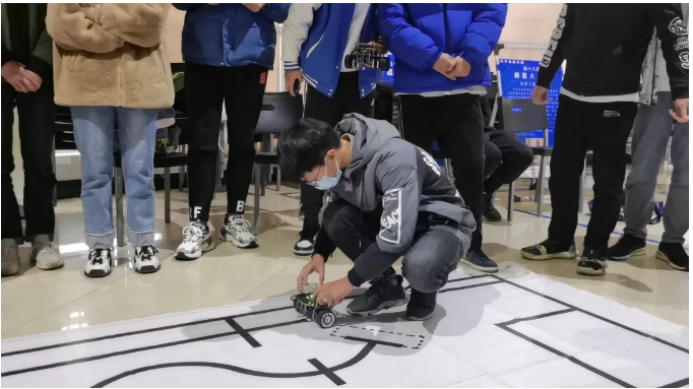

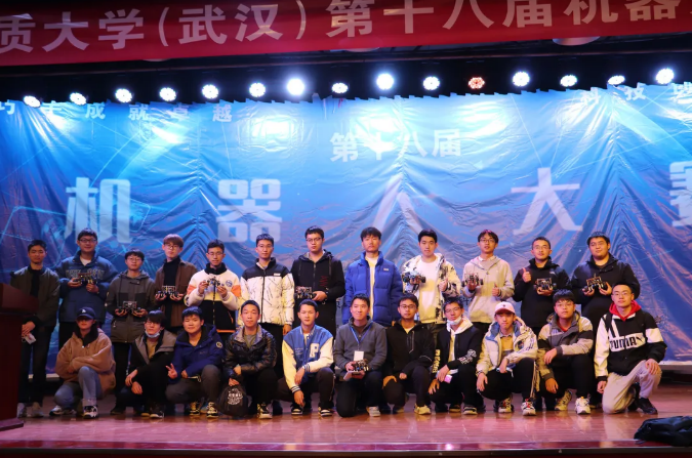
The two-wheeled racing item requires participants to design and build a two-wheeled robot that can automatically maintain balance, use rotating wheels to maintain the robot's own balance and achieve functions such as autonomous tracing and object handling. The balance was tested by placing ping pong balls during the competition. The robot uses infrared sensors to determine the direction of advancement, uses PID algorithms to control smooth travel in complex routes, and uses manual sound and light to guide the robot into the garage. This places higher demands on the robot's acceleration performance and stability.
[Innovative Design Item]
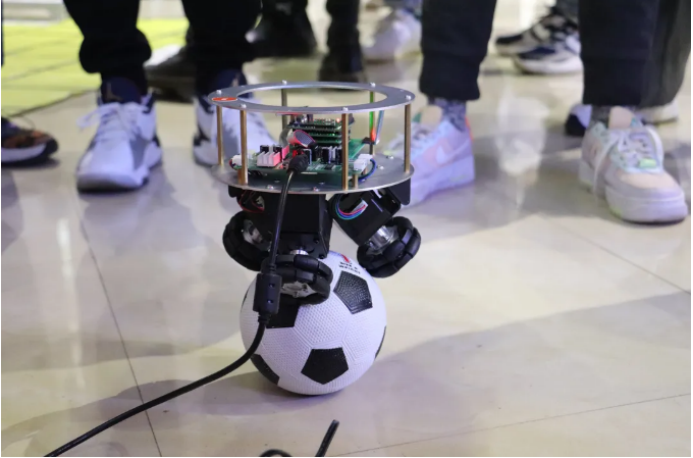
The robotics innovation item is more flexible and requires participants to design and build a new type of robot on their own within the limits set. This item mainly examines the participants' innovation ability, rapid learning ability and professional explanation ability.
In the final, an excellent works exhibition area and a robot knowledge popularization area were specially set up. The students of School of Mechanical Engineering and Electronic Information brought their excellent works designed and produced by themselves in recent years, which attracted a large number of teachers and students to visit.
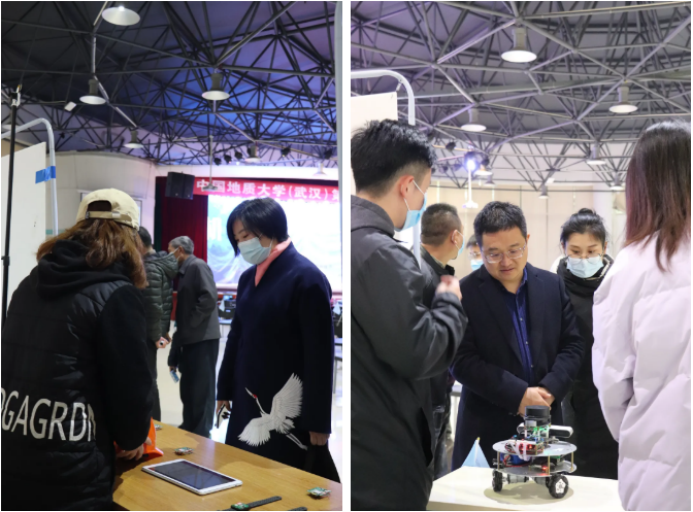

▲Teachers and students visited outstanding works
Junlin Yin, from the communication system design of the Major of Electronic Information, introduced the work of their team, the modular one-wheeled balance bike, to the students and teachers who came to visit. He said that the one-wheeled balance car was a new and innovative balance car, and its innovative single-wheel balance structure, supplemented by a flywheel, could achieve automatic balance without external intervention. The direction could also be controlled through the mobile APP, to realize front, back, left and right movement. In addition, the system adopted Bluetooth module which could send the operating status to the APP.
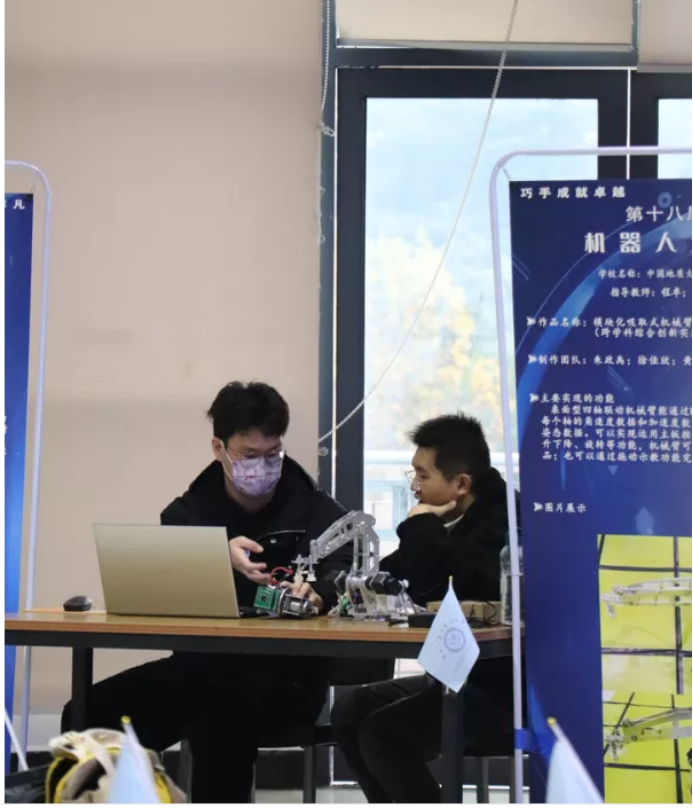
▲ Yin Junlin introduced the works of their team to the students and teachers
Liu Tanke, who participated in the two-wheeled racing group, said it was his first time to participate in a robotics competition. He felt a sense of accomplishment from being at a loss at the beginning to watching a pile of parts take shape in his hands and run successfully. Participating in this competition not only exercised his hands-on ability, but also improved his thinking ability, and tested his ability to know and do more. Liu Yuxuan, who participated in the quad-rotor group, said that through the competition, he met many like-minded friends and enjoyed the whole process very much, and he would continue to engage in science and technology practice with his classmates and experience the charm of robotics together.
It is reported that the Robotics Competition is a science and technology competition integrating fun and knowledge, jointly sponsored by the University Youth League Committee and the School of Mechanical Engineering and Electronic Information, and undertaken by the Youth League Committee of the School of Mechanical Engineering and Electronic Information, the Student Science and Innovation Center of the Mechanical Engineering and Electronic Information, and the Robotics Creators Association. Since 2004, the Robotics Competition has been successfully held for seventeen years. After years of development and improvement, the competition has been enriched in project categories, standardized in competition rules, expanded in coverage, and enhanced in comprehensive impact, and has radiated to many science and technology schools of the university, building a platform for students to carry out science and technology practice and explore the mysteries of science and technology. In 2018, the "ROBOWORK" was hosted by CUG. In order to select our outstanding competition teams to attend the national competition, the robotics competition took the initiative to connect, reconstructed the competition mechanism, increased the corresponding competition items, and improved the quality of the competition. In recent years, the robotics competition has delivered a large number of excellent teams to our university to participate in various high-level science and innovation events, such as ROBOWORK, and has achieved remarkable results. This competition has lasted for nearly three months from preparation, registration to the final round. A total of 153 teams with about 450 students registered for the competition. Before the competition, under the careful guidance of the instructors, the teams were trained several times over a month, and the preliminary rounds were held in batches on December 4, December 5 and December 9. After the selection, a total of 77 teams entered this final, including 13 teams of two-wheel racing, 11 teams of six-legged racing, 21 teams of two-legged racing, 11 teams of quad-rotor, and 2 teams of innovative design. The results of this final will be announced later. |
Previous Competition Review